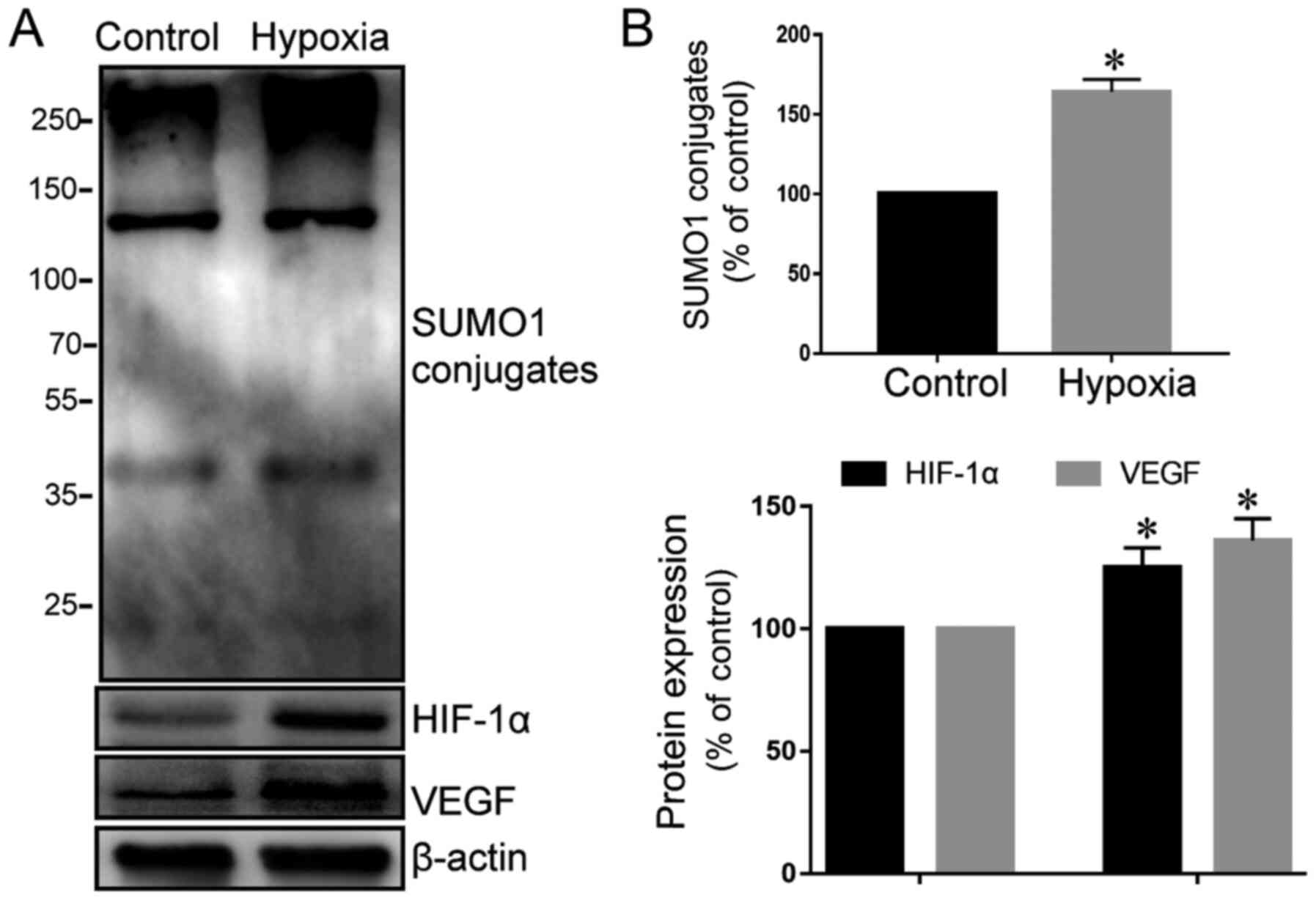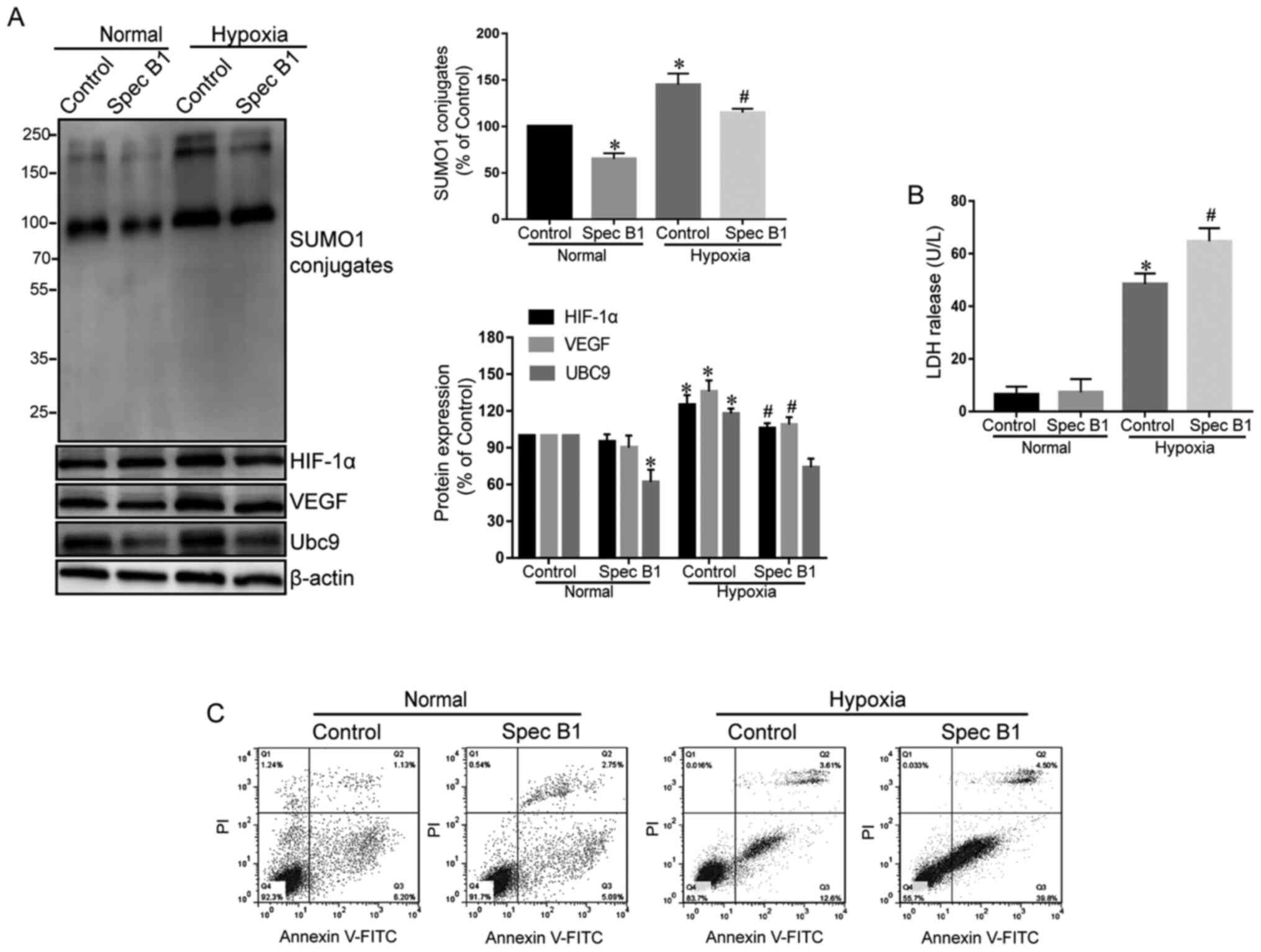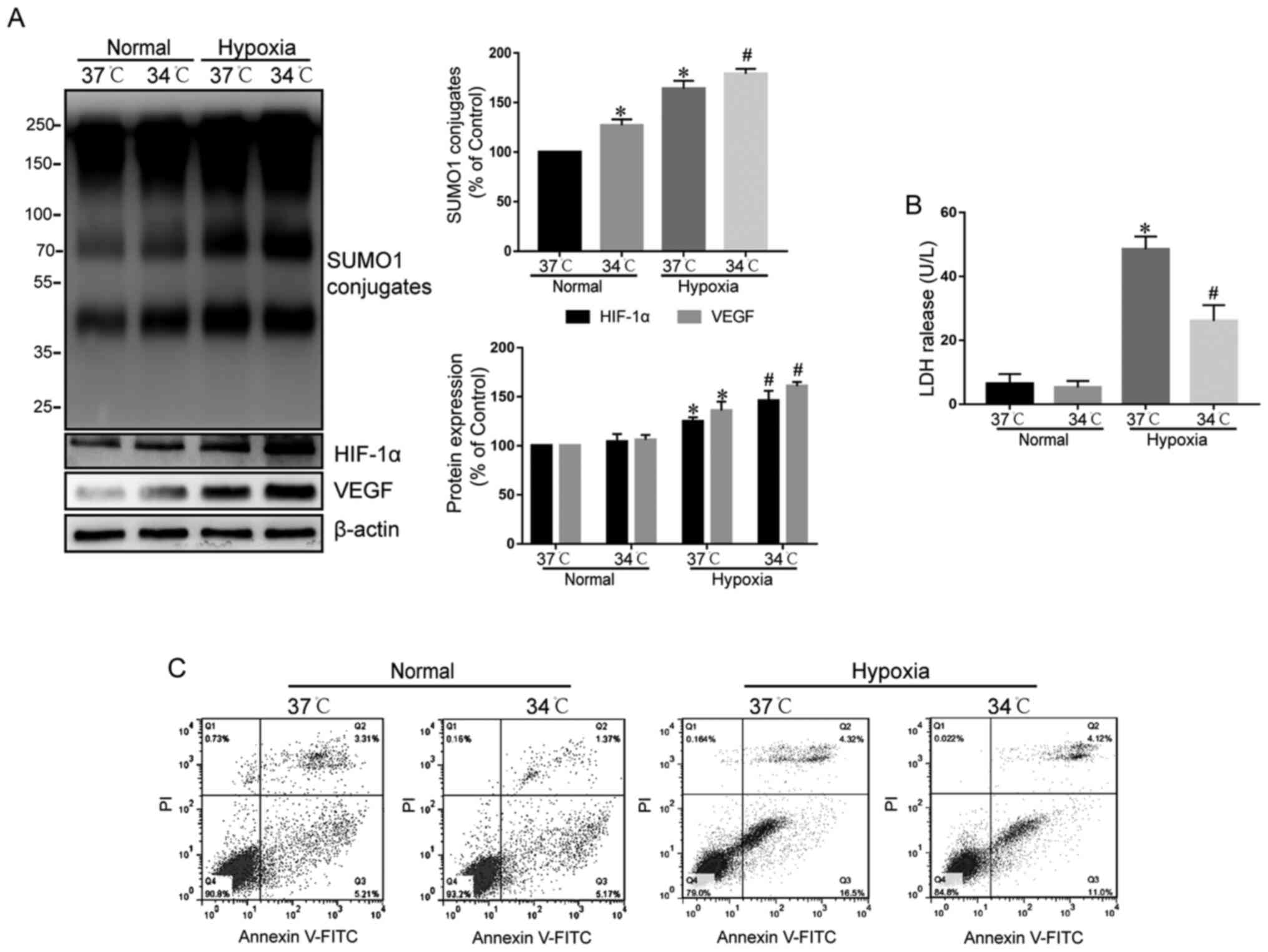|
1
|
Bigelow WG, Lindsay WK and Greenwood WF:
Hypothermia; its possible role in cardiac surgery: An investigation
of factors governing survival in dogs at low body temperatures. Ann
Surg. 132:849–866. 1950. View Article : Google Scholar : PubMed/NCBI
|
|
2
|
Jennings RB: Historical perspective on the
pathology of myocardial ischemia/reperfusion injury. Circ Res.
113:428–438. 2013. View Article : Google Scholar : PubMed/NCBI
|
|
3
|
Otterspoor LC, van Nunen LX, van't Veer M,
Johnson NP and Pijls NHJ: Intracoronary hypothermia before
reperfusion to reduce reperfusion injury in acute myocardial
infarction: A novel hypothesis and technique. Ther Hypothermia Temp
Manag. 7:199–205. 2017. View Article : Google Scholar : PubMed/NCBI
|
|
4
|
Han Y, Rajah GB, Hussain M and Geng X:
Clinical potential of pre-reperfusion hypothermia in ischemic
injury. Neurol Res. 41:697–703. 2019. View Article : Google Scholar : PubMed/NCBI
|
|
5
|
Paquot F, Huart J, Defraigne JO,
Krzesinski JM and Jouret F: Implications of the calcium-sensing
receptor in ischemia/reperfusion. Acta Cardiol. 72:125–131. 2017.
View Article : Google Scholar : PubMed/NCBI
|
|
6
|
Witcher R, Dzierba AL, Kim C, Smithburger
PL and Kane-Gill SL: Adverse drug reactions in therapeutic
hypothermia after cardiac arrest. Ther Adv Drug Saf. 8:101–111.
2017. View Article : Google Scholar : PubMed/NCBI
|
|
7
|
Zhao X: SUMO-mediated regulation of
nuclear functions and signaling processes. Mol Cell. 71:409–418.
2018. View Article : Google Scholar : PubMed/NCBI
|
|
8
|
Rosik J, Szostak B, Machaj F and Pawlik A:
Potential targets of gene therapy in the treatment of heart
failure. Expert Opin Ther Targets. 22:811–816. 2018. View Article : Google Scholar : PubMed/NCBI
|
|
9
|
Wang X, Liang X, Liang H and Wang B:
SENP1/HIF-1α feedback loop modulates hypoxia-induced cell
proliferation, invasion, and EMT in human osteosarcoma cells. J
Cell Biochem. 119:1819–1826. 2018. View Article : Google Scholar : PubMed/NCBI
|
|
10
|
Chachami G, Stankovic-Valentin N,
Karagiota A, Basagianni A, Plessmann U, Urlaub H, Melchior F and
Simos G: Hypoxia-induced changes in SUMO conjugation affect
transcriptional regulation under low oxygen. Mol Cell Proteomics.
18:1197–1209. 2019. View Article : Google Scholar : PubMed/NCBI
|
|
11
|
Tomasi ML and Ramani K: SUMOylation and
phosphorylation cross-talk in hepatocellular carcinoma. Transl
Gastroenterol Hepatol. 3:202018. View Article : Google Scholar : PubMed/NCBI
|
|
12
|
Zhou HJ, Xu Z, Wang Z, Zhang H, Zhuang ZW,
Simons M and Min W: SUMOylation of VEGFR2 regulates its
intracellular trafficking and pathological angiogenesis. Nat
Commun. 9:33032018. View Article : Google Scholar : PubMed/NCBI
|
|
13
|
Sallais J, Alahari S, Tagliaferro A,
Bhattacharjee J, Post M and Caniggia I: Factor inhibiting HIF1-A
novel target of SUMOylation in the human placenta. Oncotarget.
8:114002–114018. 2017. View Article : Google Scholar : PubMed/NCBI
|
|
14
|
Ciria M, García NA, Ontoria-Oviedo I,
González-King H, Carrero R, De La Pompa JL, Montero JA and
Sepúlveda P: Mesenchymal stem cell migration and proliferation are
mediated by hypoxia-inducible factor-1α upstream of notch and SUMO
pathways. Stem Cells Dev. 26:973–985. 2017. View Article : Google Scholar : PubMed/NCBI
|
|
15
|
Han X, Wang XL, Li Q, Dong XX, Zhang JS
and Yan QC: HIF-1α SUMOylation affects the stability and
transcriptional activity of HIF-1α in human lens epithelial cells.
Graefes Arch Clin Exp Ophthalmol. 253:1279–1290. 2015. View Article : Google Scholar : PubMed/NCBI
|
|
16
|
Cui CP, Wong CC, Kai AK, Ho DW, Lau EY,
Tsui YM, Chan LK, Cheung TT, Chok KS, Chan ACY, et al: SENP1
promotes hypoxia-induced cancer stemness by HIF-1α deSUMOylation
and SENP1/HIF-1α positive feedback loop. Gut. 66:2149–2159. 2017.
View Article : Google Scholar : PubMed/NCBI
|
|
17
|
Liu X, Ren W, Jiang Z, Su Z, Ma X, Li Y,
Jiang R, Zhang J and Yang X: Hypothermia inhibits the proliferation
of bone marrow-derived mesenchymal stem cells and increases
tolerance to hypoxia by enhancing SUMOylation. Int J Mol Med.
40:1631–1638. 2017.PubMed/NCBI
|
|
18
|
Li G, Liu X, Su Z and Zhang D: Hypothermia
exerts early neuroprotective effects involving protein conjugation
of SUMO 2/3 in a rat model of middle cerebral artery occlusion. Mol
Med Rep. 16:3217–3223. 2017. View Article : Google Scholar : PubMed/NCBI
|
|
19
|
Hirohama M, Kumar A, Fukuda I, Matsuoka S,
Igarashi Y, Saitoh H, Takagi M, Shin-ya K, Honda K, Kondoh Y, et
al: Spectomycin B1 as a novel SUMOylation inhibitor that directly
binds to SUMO E2. ACS Chem Biol. 8:2635–2642. 2013. View Article : Google Scholar : PubMed/NCBI
|
|
20
|
Bae SH, Jeong JW, Park JA, Kim SH, Bae MK,
Choi SJ and Kim KW: Sumoylation increases HIF-1alpha stability and
its transcriptional activity. Biochem Biophys Res Commun.
324:394–400. 2004. View Article : Google Scholar : PubMed/NCBI
|
|
21
|
Li R, Wei J, Jiang C, Liu D, Deng L, Zhang
K and Wang P: Akt SUMOylation regulates cell proliferation and
tumorigenesis. Cancer Res. 73:5742–5753. 2013. View Article : Google Scholar : PubMed/NCBI
|
|
22
|
Del Re DP, Amgalan D, Linkermann A, Liu Q
and Kitsis RN: Fundamental mechanisms of regulated cell death and
implications for heart disease. Physiol Rev. 99:1765–1817. 2019.
View Article : Google Scholar : PubMed/NCBI
|
|
23
|
Rossello X and Yellon DM:
Cardioprotection: The disconnect between bench and bedside.
Circulation. 134:574–575. 2016. View Article : Google Scholar : PubMed/NCBI
|
|
24
|
Heusch G and Gersh BJ: The pathophysiology
of acute myocardial infarction and strategies of protection beyond
reperfusion: A continual challenge. Eur Heart J. 38:774–784.
2017.PubMed/NCBI
|
|
25
|
Aggarwal S and Natarajan G: Biventricular
function on early echocardiograms in neonatal hypoxic-ischaemic
encephalopathy. Acta Paediatr. 106:1085–1090. 2017. View Article : Google Scholar : PubMed/NCBI
|
|
26
|
Spath NB, Mills NL and Cruden NL: Novel
cardioprotective and regenerative therapies in acute myocardial
infarction: A review of recent and ongoing clinical trials. Future
Cardiol. 12:655–672. 2016. View Article : Google Scholar : PubMed/NCBI
|
|
27
|
Nosaka N, Okada A and Tsukahara H: Effects
of therapeutic hypothermia for neuroprotection from the viewpoint
of redox regulation. Acta Med Okayama. 71:1–9. 2017.PubMed/NCBI
|
|
28
|
Kloner RA, Hale SL, Dai W and Shi J:
Cardioprotection: Where to from here? Cardiovasc Drugs Ther.
31:53–61. 2017. View Article : Google Scholar : PubMed/NCBI
|
|
29
|
Wang J, Wang Y and Lu L: De-SUMOylation of
CCCTC binding factor (CTCF) in hypoxic stress-induced human corneal
epithelial cells. J Biol Chem. 287:12469–12479. 2012. View Article : Google Scholar : PubMed/NCBI
|
|
30
|
Chen Z, Siraj S, Liu L and Chen Q:
MARCH5-FUNDC1 axis fine-tunes hypoxia-induced-mitophagy. Autophagy.
13:1244–1245. 2017. View Article : Google Scholar : PubMed/NCBI
|
|
31
|
Lee YJ, Bernstock JD, Nagaraja N, Ko B and
Hallenbeck JM: Global SUMOylation facilitates the multimodal
neuroprotection afforded by quercetin against the deleterious
effects of oxygen/glucose deprivation and the restoration of
oxygen/glucose. J Neurochem. 138:101–116. 2016. View Article : Google Scholar : PubMed/NCBI
|
|
32
|
Zhou F, Dai A, Jiang Y, Tan X and Zhang X:
SENP 1 enhances hypoxia induced proliferation of rat pulmonary
artery smooth muscle cells by regulating hypoxia inducible factor
1α. Mol Med Rep. 13:3482–3490. 2016. View Article : Google Scholar : PubMed/NCBI
|
|
33
|
Wang F, Cai F, Shi R, Wei JN and Wu XT:
Hypoxia regulates sumoylation pathways in intervertebral disc
cells: Implications for hypoxic adaptations. Osteoarthritis
Cartilage. 24:1113–1124. 2016. View Article : Google Scholar : PubMed/NCBI
|
|
34
|
Lee YJ, Mou Y, Klimanis D, Bernstock JD
and Hallenbeck JM: Global SUMOylation is a molecular mechanism
underlying hypothermia-induced ischemic tolerance. Front Cell
Neurosci. 8:4162014. View Article : Google Scholar : PubMed/NCBI
|



















